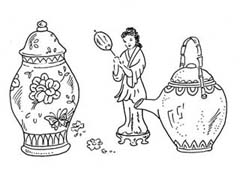
When I was a little girl, suburban shopping malls were a new and rare phenomenon, and the city was still the heart of the retail world. During the school holidays my grandmother used to take me to visit the big department stores like Anthony Hordern’s, Mark Foy’s, Grace Bros at Broadway, Farmers and David Jones. She was an inveterate shopper. So are my mother and I – it’s in the blood.
I must have been about eight when I first heard the word ‘emporium’.
‘Let’s go to the Palace Emporium,’ my grandmother announced as we emerged from the dark railway tunnel at Museum into the dappled sunlight of Elizabeth Street. It turned out that the Palace Emporium was the old name for the magnificent six-storeyed Anthony Horderns’ building, which occupied much of the block bounded by Pitt, George and Goulburn Streets.
Built in 1905, the Emporium was four years younger than my grandmother, a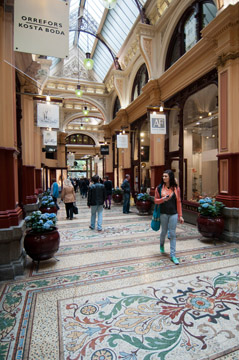 girl born and raised in the Central West of New South Wales. At the age of twenty-one, with her mother dead from the pneumonic flu and her father a distant memory (having deserted his wife and three daughters many years earlier), she took the decision to move to the city. She had left her formal education behind at age thirteen, but made up for it by reading everything she could get her hands on. She was also a talented seamstress, able to put together a stylish outfit in no time.
girl born and raised in the Central West of New South Wales. At the age of twenty-one, with her mother dead from the pneumonic flu and her father a distant memory (having deserted his wife and three daughters many years earlier), she took the decision to move to the city. She had left her formal education behind at age thirteen, but made up for it by reading everything she could get her hands on. She was also a talented seamstress, able to put together a stylish outfit in no time.
I can just picture my grandmother in her cloche hat and fox-fur stole, alighting from the train at Central, her suitcase in one hand and Gladstone bag in the other. If she had walked up George Street or even caught a cab, she couldn't have missed the Palace Emporium looming into view on the right. Even a country girl would have recognised the famous building, familiar to everyone from the picture on the cover of the Anthony Horderns’ mail-order catalogue.
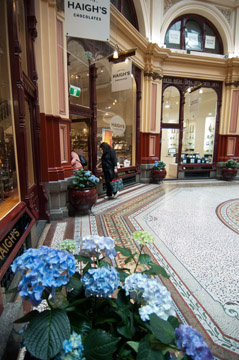 Decades later, I too found myself gazing at the same edifice, a little girl gripping her grandmother’s hand. True to its name, the exterior looked like a palace, complete with a castellated tower and parapets topped by a series of Grecian urns, like jewels on a crown. Being a child, I had no idea that the business was in decline, nor that the term ‘white elephant’ had been used to describe the premises. (And even if I had heard those words, I wouldn’t have understood the significance of the metaphor.) All I saw was a fairytale castle. Sadly there would be no happy-ever-after for the Anthony Horderns' building, but nobody knew that then.
Decades later, I too found myself gazing at the same edifice, a little girl gripping her grandmother’s hand. True to its name, the exterior looked like a palace, complete with a castellated tower and parapets topped by a series of Grecian urns, like jewels on a crown. Being a child, I had no idea that the business was in decline, nor that the term ‘white elephant’ had been used to describe the premises. (And even if I had heard those words, I wouldn’t have understood the significance of the metaphor.) All I saw was a fairytale castle. Sadly there would be no happy-ever-after for the Anthony Horderns' building, but nobody knew that then.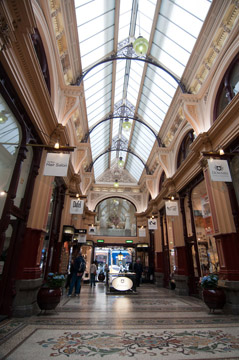
Once inside the store, I discovered embossed metal ceilings, heavy columns, vast spaces and an array of goods meticulously laid out on tables. I might be confusing it with somewhere else, but in my mind’s eye I can still see an old-fashioned docketing system using a pulley and wires, which seemed to spirit away the money and promptly deliver a receipt, as if by magic. Back then, department stores had lifts with operators who would recite the names of the goods on every floor. I could have ridden up and down in those lifts for hours, just listening to the fascinating inventory.
Ever since those days, I’ve loved the word ‘emporium’, though as a small child, I never imagined I would write a novel with an emporium as its centrepiece … or a novel of any kind, for that matter. My own emporium isn’t grand like Anthony Horderns’. It’s just a single-storeyed building of modest size on the main street of a fictional country town.
However, inside its blood-red front doors, the heroine Amy Duncan finds a different world, ‘a storehouse of possibilities’, as she calls it. For someone who loves to shop, it’s filled with covetable items – silks, furniture, porcelain and jade. For a young woman intrigued by its owner, there is far more to Mr Chen’s Emporium than the merchandise. Above all, it is a place where a love story, prohibited by the prejudices of nineteenth-century society, can blossom unchallenged, until …
Read more about MR CHEN'S EMPORIUM here.
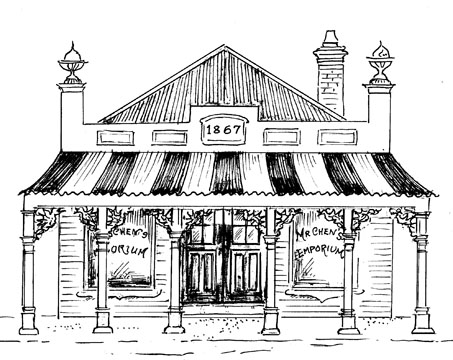
The magnificently restored arcades in the photographs above are in Melbourne, not Sydney. Apart from the wonderful Queen Victoria Building and the Strand Arcade, it is a tragedy that Sydney retains very little of its 19th century shopping history.
Deborah O’Brien
March, 2012
